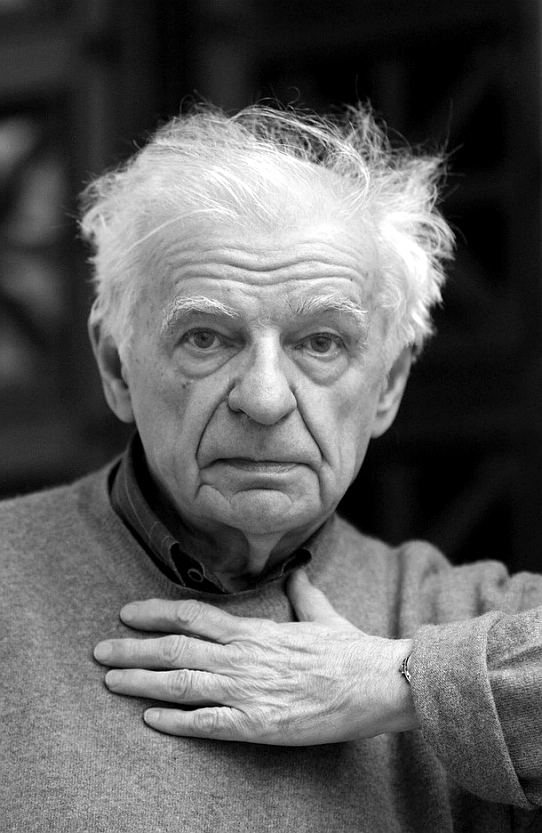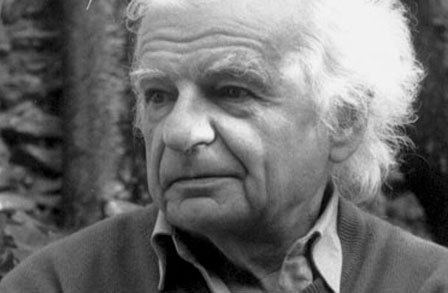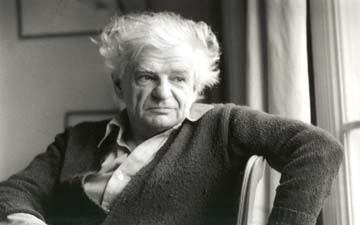Name Yves Bonnefoy Siblings Suzanne Bonnefoy Children Mathilde Bonnefoy | Spouse Lucille Vines (m. 1968) Role Poet | |
 | ||
Parents Marius Elie Bonnefoy, Helene Maury Books Les planches courbes, The Arriere‑pays, The Curved Planks, New and selected poems, On the motion and immobilit Similar People Philippe Jaccottet, Mathilde Bonnefoy, Andre du Bouchet, Jean Starobinski, Jacques Dupin | ||
Yves Bonnefoy reads his poem "La Maison Natale"
Yves Jean Bonnefoy (24 June 1923 – 1 July 2016) was a French poet and art historian. He also published a number of translations, most notably the plays of William Shakespeare which are considered among the best in French. He was professor at the Collège de France from 1981 to 1993 and is the author of several works on art, art history, and artists including Miró and Giacometti. The Encyclopædia Britannica states that Bonnefoy was ″perhaps the most important French poet of the latter half of the 20th century.″
Contents
- Yves Bonnefoy reads his poem La Maison Natale
- Yves bonnefoy reads his poem les planches courbes
- Life and career
- Awards and honours
- Selected works in English translation
- References

Yves bonnefoy reads his poem les planches courbes
Life and career

Bonnefoy was born in Tours, Indre-et-Loire, the son of Marius Elie Bonnefoy, a railroad worker, and Hélène Maury, a teacher. He studied mathematics and philosophy at the Universities of Poitiers and the Sorbonne in Paris. After the Second World War he travelled in Europe and the United States and studied art history. From 1945 to 1947 he was associated with the Surrealists in Paris (a short-lived influence that is at its strongest in his first published work, Traité du pianiste (1946)). But it was with the highly personal Du mouvement et de l'immobilité de Douve (On the Motion and Immobility of Douve, 1953) that Bonnefoy found his voice and that his name first came to public notice. Bonnefoy's style is remarkable for the deceptive simplicity of its vocabulary.
Bonnefoy's work has been translated into English by, among others, Emily Grosholz, Galway Kinnell, John Naughton, Alan Baker, Hoyt Rogers, Antony Rudolf, Beverley Bie Brahic and Richard Stamelmann. In 1967 he joined with André du Bouchet, Gaëtan Picon, and Louis-René des Forêts to found L'éphémère, a journal of art and literature. Commenting on his work, Bonnefoy has said:
"One should not call oneself a poet. It would be pretentious. It would mean that one has resolved the problems poetry presents. Poet is a word one can use when speaking of others, if one admires them sufficiently. If someone asks me what I do, I say I’m a critic, or a historian."
He taught literature at a number of universities in Europe and in the USA (Brandeis University, Waltham, Massachusetts (1962–64); Centre Universitaire, Vincennes (1969–1970); Johns Hopkins University, Baltimore; Princeton University, New Jersey; University of Connecticut, Storrs, Connecticut;Yale University, New Haven, Connecticut; University of Geneva; University of Nice (1973–1976); University of Provence, Aix (1979–1981); and Graduate Center, City University of New York, where he was made an honorary member of the Academy of the Humanities and Sciences. In 1981, following the death of Roland Barthes, he was given the chair of comparative study of poetry at the Collège de France.
Bonnefoy died on 1 July 2016 at the age of 93 in Paris. President François Hollande stated of Bonnefoy on his death that he would be remembered for "elevating our language to its supreme degree of precision and beauty".
Awards and honours
Bonnefoy was honoured with a number of prizes throughout his creative life. Early on he was awarded the Prix des Critiques in 1971. Ten years later, in 1981, The French Academy gave him its grand prize, which was soon followed by the Goncourt Prize for Poetry in 1987. Over the next 15 years, Bonnefoy was awarded both the Prix mondial Cino Del Duca and the Balzan Prize (for Art History and Art Criticism in Europe) in 1995, the Golden Wreath of Struga Poetry Evenings in 1999, and the Grand Prize of the First Masaoka Shiki International Haiku Awards in 2000. Toward the final years of his life, Bonnefoy was recognized with the Franz Kafka Prize in 2007 and, in 2011, he received the Griffin Lifetime Recognition Award, presented by the trustees of the Griffin Poetry Prize. In 2014, he was co-winner of the Janus Pannonius International Poetry Prize.
